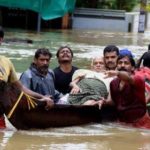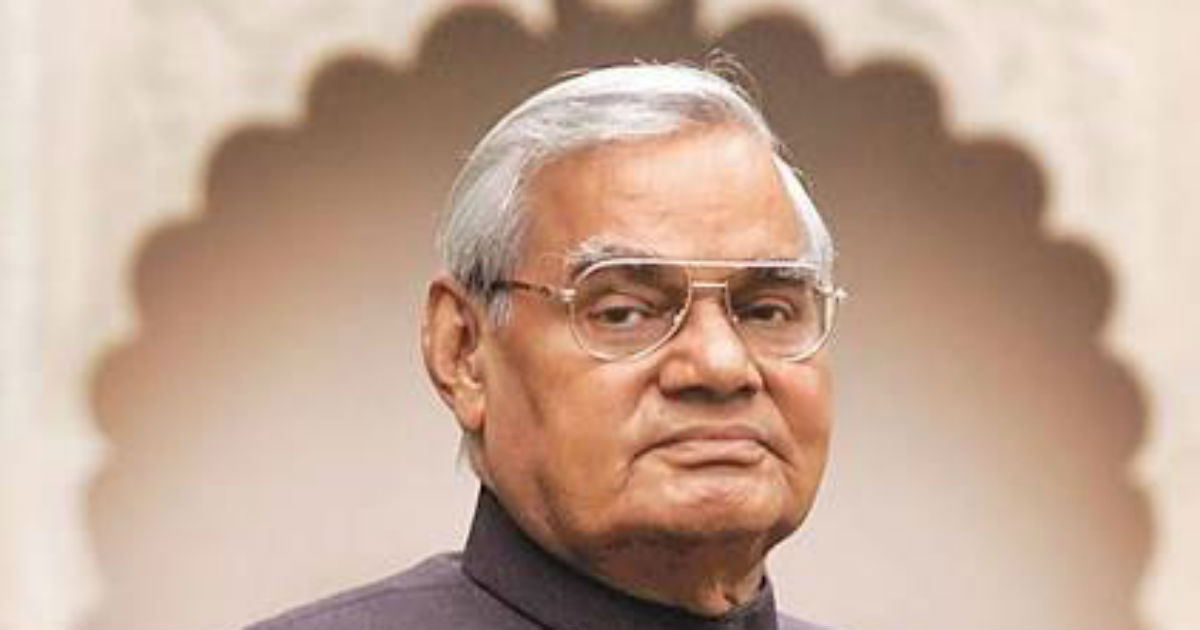India Former Prime Minister “Bharat Ratna” Shri Atal Bihari Vajpayee Passes at 93 on 16 August in New Delhi
AIIMS announced that Atal Bihari Vajpayee has acquired a life support system at a late-night press conference released on Wednesday night.
Vajpayee ji is a diabetic who has been taking it for a functional kidney. His stroke in 2009 weakened his cognitive ability. Later, he developed dementia. From this morning, several political leaders rushed to the hospital to inquire about the health of Vajpayee.
Prime Minister Narendra Modi visited former Prime Minister Vajpayee twice, followed by LK Advani, leader of the High People’s Party.
Delhi CM Arvind Kejriwal, EAM Sushma Swaraj and Agriculture Minister Radha Mohan Singh, Rajasthan CM Vasundhra Raje, Odisha CM Naveen Patnaik, Lok Sabha Speaker Sumitra Mahajan and others visited Vajpayee today.
UP CM Yogi, Bihar CM Nitish Kumar, Assam CM Sonowal will also travel to Delhi later in the day.
Since this afternoon, the Vajpayee family from Gwalior and Agra has also been at AIIMS.
School children across the country hold prayer meetings, hoping for the happiness of Vajpayee.
Bharat Ratna Atal Bihari said:
“Giving personal power means empowering the state. It is best to empower by rapid economic growth and rapid social change.”
In fact, these words are reflected in his contribution to the country. He not only improved the Indian economy, but also introduced social reforms to promote the unprivileged class of society.
Contribution of Atal Bihari Vajpayee in Making Better India
- Increase India’s gross domestic product
He pushed India to a new height by introducing economic reforms. During his tenure from 1998 to 2004, India maintained an 8% GDP rate, inflation fell to 4%, and foreign exchange reserves flourished.
Although India faced catastrophic events during his tenure, including the earthquake (2001), two hurricanes (1999 and 2000), terrible drought (2002-2003), the oil crisis (2003), the Kargil conflict (1999). Year) and the parliament attack, but he maintained a stable economy
- Introduction to the FISCAL Liability Act
In addition to raising India’s gross domestic product to 8% during his tenure, he further introduced the Fiscal Responsibility Act, which aims to reduce fiscal deficits and increase public sector savings.
- Privatization
In several milestones during his brief administration, privatization was also appreciated.
It promotes private companies in India and reduces government involvement in the industry.
In addition, he formed a separate divestment department.
- The rise of the Indian telecommunications industry
- His government introduced a revenue sharing model under the new telecommunications policy that helps telecommunications companies avoid fixed license fees.
- Bharat Sanchar Nigam Ltd was established to lead the service and policy
- In order to further strengthen the telecommunications sector, he established the Telecommunications Dispute Resolution Appeals Tribunal.
- International telephone service Videsh Sanchar Nigam Ltd has ended
- Education policy
- This is the first time that India has provided free primary education for children aged 6-14.
- It was launched in 2001 and the number of dropouts has changed dramatically by 60%.
- Strengthen global relations
- Under his rule, India improved trade and reduced territorial disputes with the People’s Republic of China.
- In 2000, he invited former US President Bill Clinton to improve bilateral relations after the Cold War.
- From July 14 to 16, 2001, he invited the then President, Pervez Musharraf, to India to attend the two-day Agra summit to discuss cross-border terrorism and Kashmir.
- In addition, with the opening of the Delhi-Lahore bus on February 19, 1999, Vajpayee sent a green signal to the road connection between India and Pakistan.
- Science and research
- Vajpayee passed the Chandrayan-1 project
On India’s 56th Independence Day, he said: “Our country is now ready to fly high in science. I am happy to announce that India will send its spaceship to the moon by 2008. It was Named Chandrayaan. - He made India a nuclear weapon state. In 1998, India conducted five nuclear tests in a week.
“We are now capable of producing large bombs. We will never become a weapon of aggression,” he said.
- Infrastructure
- India’s most ambitious road projects were initiated by him, including Golden Quadrilateral and Pradhanmantri Gramin Sadak Yojna
- Golden Quadrilateral connects to the metropolis via the highway network – Chennai, Kolkata, Delhi and Mumbai
- Pradhanmantri Gramin Sadak Yojna connects remote villages across the country with all-weather roads.
Image Credit: Firstpost.com
![]()



